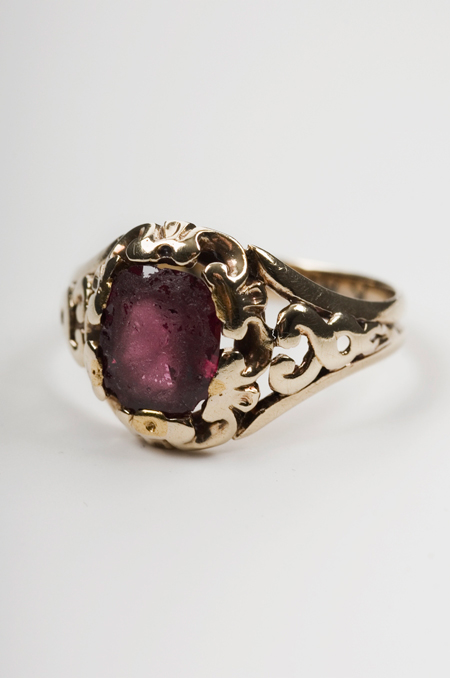In this piece, taken from Port issue two, John-Paul Pryor explores the beauty and consequences of love on beloved poet Keats via the iconic item that defined him
It has long been said that love is a many-splintered thing and in the canon of the broken-hearted the working-class romantic poet John Keats is undoubtedly the quintessential tortured soul.
The profundity of the feelings this perpetually sickly young genius expressed for girl-next-door Fanny Brawne has become one of the most enduring love stories of all time.
The pragmatic, if somewhat flirtatious, seventeen-year-old girl from Hampstead captured the heart of the near-penniless wordsmith as he spent his days nursing his younger brother on his deathbed (a young man dying from tuberculosis – the illness that had claimed their father, and that would less than a decade on despatch of Keats). It could be argued that in his despair, Keats projected upon Fanny the notion of perfection, and for the rest of the writer’s very short life, his “Bright Star” was to utterly consume him.
Although the pair became engaged in 1818, their relationship never truly blossomed beyond letters and torturous longing: “I cannot exist without you – I am forgetful of every thing but seeing you again – my life seems to stop there – I see no further. You have absorb’d me… I have been astonished that Men could die Martyrs for religion – I have shudder’d at it – I shudder no more – I could be martyr’d for my Religion – Love is my religion – I could die for that – I could die for you.”
The poet’s social standing was such that he could not actually afford to marry her, and they kept their union a secret from all but their closest friends until long after his death. Considering the creeping malaise that cast such a long shadow over Keats’s life – and that lent such a macabre edge to his poetry – it is perhaps no accident that he chose to profess his eternal love for Fanny via a gold engagement ring set with an almandine stone – a dark mineral that has ancient mythological associations of healing and protection with a reddish violet hue.
Given his literary fervour for mythos and the supernatural, it is likely that the poet believed in the supposed metaphysical power of this stone, common to ancient pagan rites, and that he chose it for this very reason – after all, he would not have wished upon his heart’s desire the spectre of illness that had so roundly troubled many of his waking hours.
Image credit: Engagement ring of Fanny Brawne, The City of London, Keats House, Hampstead

Indeed, during his last days he held clasped to his own breast a white carnelian – a magical stone that Fanny had given him in the hope of cooling his encroaching fever. Whether such an obsessive love for another is wise is, of course, a question that has troubled many a psychoanalyst’s couch but the 19th century critic RH Stoddard’s opinion on such matters was clear enough upon the publication of Keats’s letters to Fanny in 1848: “John Keats was a great genius, but he had not one particle of common-sense – for himself. Few men of genius ever do have… Why, a boy might have told Keats that the way to woo and win a woman was not to bare his heart before her, as he did before Fanny Brawne, and not to let her know, as he did, that he was her captive.”




